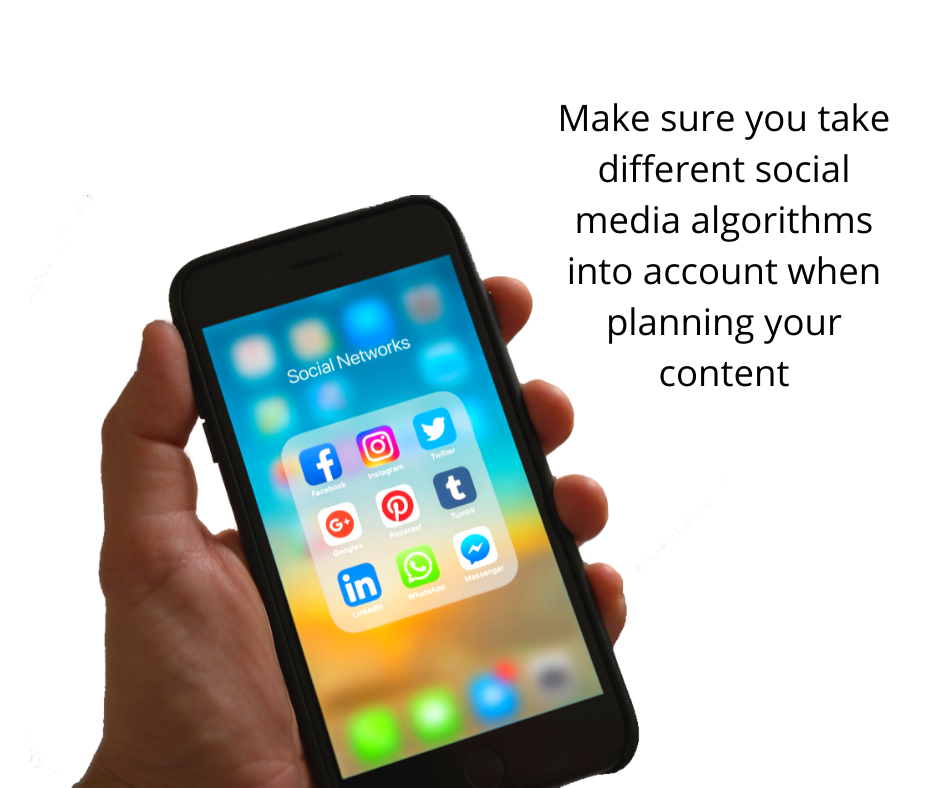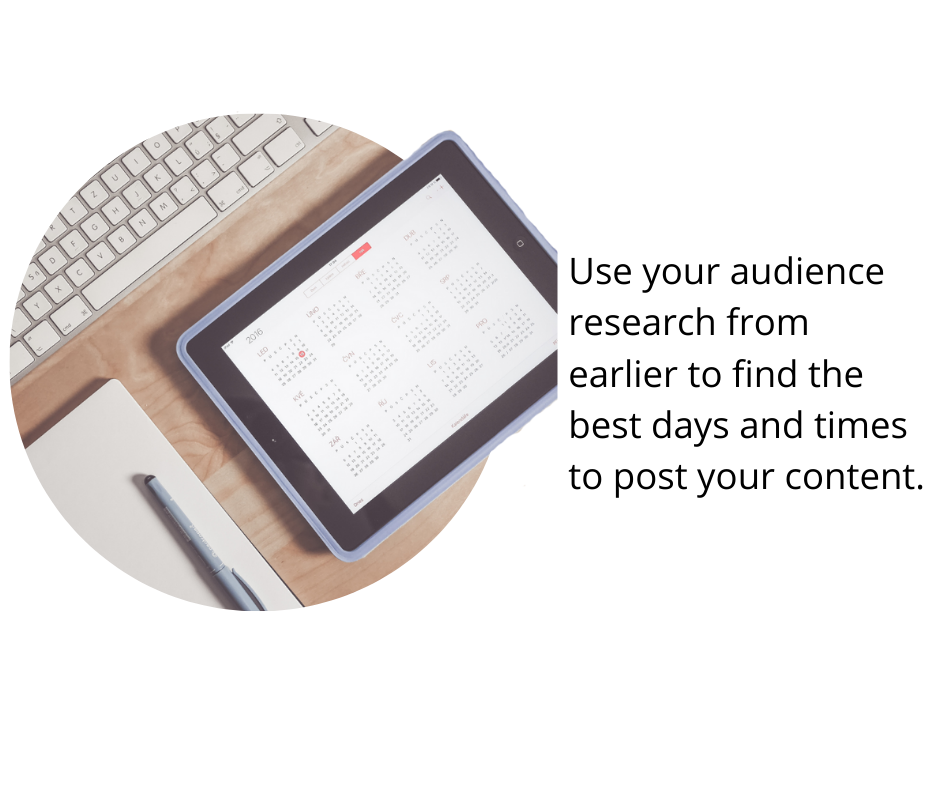Posting business content on social media is something many people think is easy. After all, we all post our day-to-day lives constantly on Facebook…right? Well, when it comes to content marketing for your business, it takes far more than just posting photos and captions a few times a week. Having a plan in place for your content marketing can help your business gain followers, get better engagement rates, and drive more conversions from your social media platforms. This is why you need a social media content strategy to guide you.
To put it simply, a content strategy is a plan of action for all the content your business will release over a set amount of time (usually over a few months). A good strategy should outline what content will be posted on which social platforms, and how your content will meet your chosen KPIs. A great strategy will also evaluate your audience and tell you how to effectively target them while differentiating yourself from your competitors. Essentially, this will allow you to meet your business goals by using content as a primary marketing tool.

The first step in making any business-related strategy should always be research. This is the difference between a good strategy and a great one. In this step, you should be looking to answer three questions that will drive your entire content strategy by helping you better define your goals and effectively make content planning decisions.
Knowing your audience is the only way you can make sure all your content appeals to them, answers their questions, and gets them engaged. Here are the main ways you can get this valuable audience information:
Competitive analysis is crucial to any successful content strategy. The main thing to do here is to learn from your competitors. How are they performing on social media? Have a look at what they are doing and learn what to avoid or take inspiration from. Consider whether there are any gaps in their social media marketing efforts that you could aim to fill – a typical example is companies not responding to their audience in the comments section. If this is something you notice your competitor isn’t doing, then make sure your business is super responsive in your own posts’ comments and your competitors’ audiences might just switch to you!
There are loads of great tools you can use for competitive analysis – RivalIQ, SpyFu and SEMrush are all excellent free tools, and Facebook Business Suite also lets you keep tabs on the followers, reach and engagement rate of up to five competitor pages. Check out our Competitor Analysis Guide for more information.
This could be trends in your industry or trends on social media in general. It’s really important to be up to date on both! Using Google Trends, searching hashtags on Facebook or Instagram, and looking at the News tab on Google are great ways to get up to date on all the latest hot topics for free.
Wherever possible, make sure you tailor a chunk of your content to current trending topics or content types – audiences will be actively searching for this kind of content so it’s a great way to bring more traffic to your social media pages without paying a penny!

After doing all your research you will have loads of information on your audience, competitors, and current trends. To make all this information digestible and more usable in your content planning, you should create a written social media review. This doesn’t have to be anything fancy; it could simply be a written list of all your main research findings. But one thing it should definitely include is an in-depth buyer persona.
To create a buyer persona, you will need to use all the audience research you conducted and make a profile for your ‘ideal customer’. This will be a fictional person who meets every specification of your target audience. Generally, a buyer persona includes information about your ideal customer’s demographics, likes and dislikes, and their preferred brands and marketing channels (this is an important one!). A persona should also include whether they are rational or emotional when it comes to making purchase decisions, and what their general lifestyle may be like (for example, are they a student? Do they work a 9-5 office job? Do they have a young family?).
You may find you need more than one buyer persona to cover more than one audience – in fact, many marketers today create content for three audience segments, each of which would need its own buyer persona! (HubSpot, 2020)
HubSpot has a great tool for generating your buyer personas, which is especially useful for new businesses or businesses wanting to target a new audience. There are also excellent buyer persona templates on programs such as Canva.
So you have your review and buyer personas, which have been made from all your in-depth research, and you are now in a great position to effectively plan your content marketing. This is the stage where most people start their content strategy, and they tend to blindly plan content that they think their audience will respond well to. Well, thanks to your research and review efforts you have a huge upper hand because you know exactly how to make content that will directly target your audience’s interests and get the results you want!
When planning your content, there are three things you need to consider:
Is it one of your buyer personas, or multiple? If you are aiming to target multiple personas, how will you appeal to all of them at the same time without deterring any of them?
Are you going for an image carousel, a video, a short animation, PR? The options on social media are vast and varied, and different content types engage different audiences. It is also important to consider that social media algorithms may favour some content types over others. For example, Facebook’s algorithm favours video content (especially live video) and is more likely to put this type of content on people’s newsfeeds than a post with just an image and text.
A useful model to use for this is the DRIP model – Differentiate, Reinforce, Inform, Persuade. Every piece of content you post should aim to do one or two of these things. For example, a social media campaign advertising a drink brand’s new flavour range would generally aim to Differentiate their product and Persuade audiences to buy it. Whereas a charity PR campaign would generally aim to Inform audiences about their current fundraising efforts. You must also decide whether to use emotional or rational messaging in your content – your buyer persona should tell you which to aim for!
The best way to plan your content marketing is to have a team brainstorming session. Come up with ideas and analyse them against your buyer personas to see whether they would work for your audiences. From here you can plan entire content campaigns!
Remember that not all social media content has to be posted on every platform – most of the time one of your personas may prefer Facebook and another persona will use LinkedIn, and the content for each of these platforms can be very different.
This may be where you want to consider using a content marketing agency to guide you. With expertise and knowledge in all aspects of content marketing on every social platform, an agency will likely be able to provide effective ideas and campaign strategies that will nail your KPIs across all your channels.

Creating your planned content can be a huge task, and you can either create content as you go or create a big ‘batch’ of content in one go that will last a few months. Whatever you decide, there are a few options for managing content creation:
A final, but crucial, step in your social media content strategy is scheduling your content for release. Look at your buyer personas and use your research on the times that your social media audiences are most active, and plan to release content at these times. You could also consider this handy research report from Sprout Social, which indicates the best times to post on Facebook and Instagram for each major industry in 2021.
Common practice when scheduling content is to use a social media content calendar which links to your social platforms and automatically posts content at the scheduled times. Canva and Sprout Social both have excellent content calendars as part of their paid programs, or for free you can use the built-in content calendar on Facebook’s Business Suite. If you are running a long-term campaign, or planning to use paid ads, you could also use Facebook’s Ad Manager to schedule and target your content.

Once your strategy is made and your content is scheduled, it’s important to still keep on top of trends and shifts in your industry and change your strategy when needed. You may also need to make some edits to your strategy when a social media platform has an algorithm update, as these updates may make a well-planned campaign unsuccessful if it’s not properly optimised.
To get expert advice in making a content strategy that optimises social media algorithms and hits all your KPI goals, get in touch with the Social Media and Content team at Rank Your Domain.